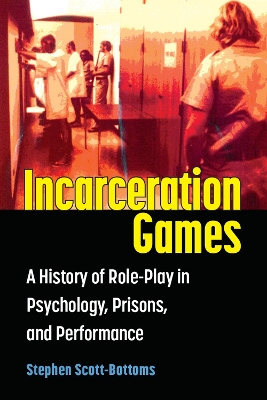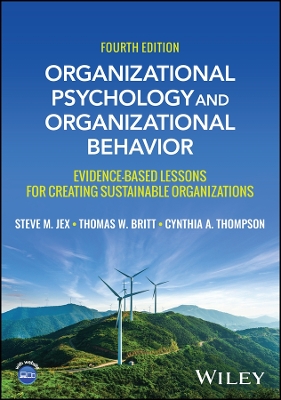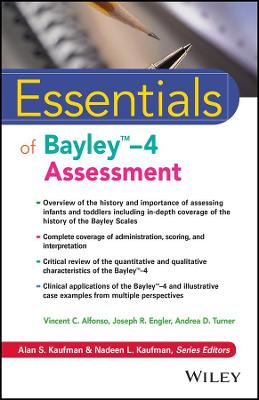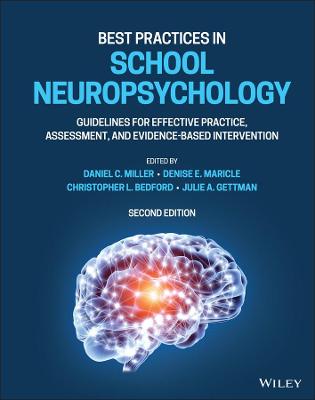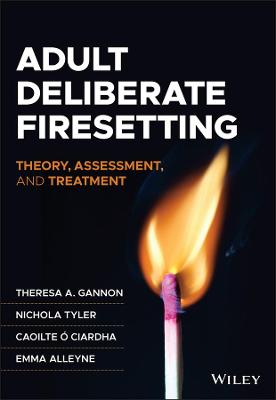Thinking Good, Feeling Better
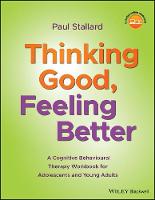 -15%
portes grátis
-15%
portes grátis
Thinking Good, Feeling Better
A Cognitive Behavioural Therapy Workbook for Adolescents and Young Adults
Stallard, Paul
John Wiley & Sons Inc
12/2018
240
Mole
Inglês
9781119396291
15 a 20 dias
652
Acknowledgement xv
Online resources xvii
1 Cognitive behaviour therapy: theoretical origins, rationale, and techniques 1
The foundations of CBT 2
First wave: behaviour therapy 2
Second wave: cognitive therapy 3
The cognitive model 4
Third wave: acceptance, compassion, and mindfulness 5
Core characteristics of CBT 7
CBT is theoretically determined 7
CBT is based on a collaborative model 8
CBT is time-limited 8
CBT is objective and structured 8
CBT has a here-and-now focus 8
CBT is based on a process of guided self-discovery and experimentation 8
CBT is a skill-based approach 8
The goal of cognitive behaviour therapy 9
The core components of CBT 9
Psycho-education 10
Values, goals, and targets 10
Acceptance and acknowledgement of strengths 10
Thought monitoring 10
Identification of cognitive distortions and deficits 10
Thought evaluation and developing alternative cognitive processes 10
Development of new cognitive skills 11
Mindfulness 11
Affective education 11
Affective monitoring 11
Affective management 11
Activity monitoring 11
Behaviour activation 12
Activity rescheduling 12
Skills development 12
Behavioural experiments 12
Fear hierarchy and exposure 12
Role play, modelling, exposure, and rehearsal 12
Self-reinforcement and reward 12
The clinician's toolbox 13
2 The process of cognitive behaviour therapy 15
Therapeutic process 15
Phases of CBT 16
Relationship building and engagement 16
Psycho-education 17
Promoting self-awareness and understanding 17
Enhancing skills and development 18
Consolidation 18
Relapse prevention 19
Adapting CBT for young people 19
Cognitive vs behavioural focus 20
Therapeutic partnership 20
Language 20
Dichotomous thinking 21
Verbal vs non-verbal materials 21
Technology 21
Common problems when undertaking CBT with young people 22
Limited verbal skills 22
Limited cognitive skills 22
Lack of engagement 23
No responsibility for securing change 23
Difficulty accessing thoughts 23
Failure to undertake home assignments 24
Focus shifting 24
Working with egocentricity 24
Significant family dysfunction 25
'I get it, but I don't believe it' 25
3 Thinking good, feeling better: overview of materials 27
Value yourself 29
Summary 29
Worksheets 29
Be kind to yourself 29
Summary 29
Worksheets 30
Be mindful 30
Summary 30
Worksheets 31
Getting ready to change 31
Summary 31
Worksheets 31
Thoughts, feelings, and what you do 31
Summary 31
Worksheets 32
The way you think 32
Summary 32
Worksheets 32
Thinking traps 33
Summary 33
Worksheets 33
Change your thinking 33
Summary 33
Worksheets 34
Core beliefs 34
Summary 34
Worksheets 34
Understand how you feel 35
Summary 35
Worksheets 35
Control your feelings 35
Summary 35
Worksheets 36
Problem-solving 36
Summary 36
Worksheets 37
Check it out 37
Summary 37
Worksheets 37
Face your fears 38
Summary 38
Worksheets 38
Get busy 38
Summary 38
Worksheets 39
Keeping well 39
Summary 39
Worksheets 39
4 Value yourself 41
How does self-esteem develop? 42
Can you change self-esteem? 42
Find your strengths 43
Use your strengths 44
Find and celebrate the positive 45
Look after yourself 46
Diet 46
How much sleep do I need? 47
I'm not getting enough sleep 48
I can't get off to sleep 48
Alcohol 49
Physical activity 50
5 Be kind to yourself 57
Eight helpful habits 58
Treat yourself like you would treat a friend 58
Don't kick yourself when you are down 59
Forgive mistakes 59
Celebrate what you achieve 60
Accept who you are 61
Speak kindly to yourself 61
Find the good in others 62
Be kind to others 63
6 Be mindful 69
Mindfulness 70
Focus, observe, be curious, and use your senses 70
Mindful breathing 71
Mindful eating 72
Mindful activity 73
Mindful observation 74
Suspend judgement 75
Mindful thinking 75
7 Getting ready to change 81
What you think 82
How you feel 83
What you do 83
The negative trap 83
Good news 84
Are you ready to try? 85
My goals 85
The miracle question 86
8 Thoughts, feelings, and what you do 93
How does the negative trap happen? 94
Core beliefs 94
Assumptions 94
Unhelpful beliefs 95
Beliefs are strong 96
Turning your beliefs on 96
Automatic thoughts 96
How you feel 97
What you do 98
The negative trap 98
9 The way you think 103
Hot thoughts 104
Helpful thoughts 104
Unhelpful thoughts 105
Automatic thoughts 105
The negative trap 106
10 Thinking traps 111
Negative filter 112
Negative glasses 112
Positive doesn't count 112
Blowing things up 113
Magnifying the negative 113
All-or-nothing thinking 113
Disaster thinking 113
Predicting failure 114
The fortune teller 114
Mind reading 114
Being down on yourself 115
Dustbin labels 115
Blame me 115
Setting yourself to fail 115
Should and must 116
Expecting to be perfect 116
11 Change your thinking 121
Catch it 121
Check it 121
Challenge it 122
Change it 123
What would someone else say? 124
Dealing with worries 125
Why do we worry? 126
Keep worries under control 126
Make worry time 127
Delay worry 127
Solve the worries you can do something about 127
Accept the worries you can do nothing about 127
12 Core beliefs 133
Core beliefs 133
Finding core beliefs 134
Challenging core beliefs 137
Is it always true? 137
If it doesn't work? 138
13 Understand how you feel 143
Body signals 143
Feelings 144
How do your feelings change? 145
Why me? 146
14 Control your feelings 153
Relaxation exercises 153
Quick relaxation 155
Physical activity 155
4-5-6 breathing 156
Calming images 157
Mind games 158
Change the feeling 158
Soothe yourself 159
Talk to someone 159
15 Problem-solving 167
Why do problems happen? 168
Problem-solving 169
Break it down 171
16 Check it out 177
Experiments 178
Be open-minded and curious 180
Surveys and searches 181
Responsibility pies 182
17 Face your fears 189
Small steps 190
Make a fear ladder 191
Face your fears 192
18 Get busy 197
Getting busy 198
What you do and how you feel 198
Change what and when you do things 200
Have more fun 201
19 Keeping well 207
What helped? 207
Build them into your life 208
Practice 209
Expect setbacks 210
Know your warning signs 210
Watch out for difficult times 211
Be kind to yourself 212
Stay positive 212
When do I need to get help? 213
References 217
Index 221
Acknowledgement xv
Online resources xvii
1 Cognitive behaviour therapy: theoretical origins, rationale, and techniques 1
The foundations of CBT 2
First wave: behaviour therapy 2
Second wave: cognitive therapy 3
The cognitive model 4
Third wave: acceptance, compassion, and mindfulness 5
Core characteristics of CBT 7
CBT is theoretically determined 7
CBT is based on a collaborative model 8
CBT is time-limited 8
CBT is objective and structured 8
CBT has a here-and-now focus 8
CBT is based on a process of guided self-discovery and experimentation 8
CBT is a skill-based approach 8
The goal of cognitive behaviour therapy 9
The core components of CBT 9
Psycho-education 10
Values, goals, and targets 10
Acceptance and acknowledgement of strengths 10
Thought monitoring 10
Identification of cognitive distortions and deficits 10
Thought evaluation and developing alternative cognitive processes 10
Development of new cognitive skills 11
Mindfulness 11
Affective education 11
Affective monitoring 11
Affective management 11
Activity monitoring 11
Behaviour activation 12
Activity rescheduling 12
Skills development 12
Behavioural experiments 12
Fear hierarchy and exposure 12
Role play, modelling, exposure, and rehearsal 12
Self-reinforcement and reward 12
The clinician's toolbox 13
2 The process of cognitive behaviour therapy 15
Therapeutic process 15
Phases of CBT 16
Relationship building and engagement 16
Psycho-education 17
Promoting self-awareness and understanding 17
Enhancing skills and development 18
Consolidation 18
Relapse prevention 19
Adapting CBT for young people 19
Cognitive vs behavioural focus 20
Therapeutic partnership 20
Language 20
Dichotomous thinking 21
Verbal vs non-verbal materials 21
Technology 21
Common problems when undertaking CBT with young people 22
Limited verbal skills 22
Limited cognitive skills 22
Lack of engagement 23
No responsibility for securing change 23
Difficulty accessing thoughts 23
Failure to undertake home assignments 24
Focus shifting 24
Working with egocentricity 24
Significant family dysfunction 25
'I get it, but I don't believe it' 25
3 Thinking good, feeling better: overview of materials 27
Value yourself 29
Summary 29
Worksheets 29
Be kind to yourself 29
Summary 29
Worksheets 30
Be mindful 30
Summary 30
Worksheets 31
Getting ready to change 31
Summary 31
Worksheets 31
Thoughts, feelings, and what you do 31
Summary 31
Worksheets 32
The way you think 32
Summary 32
Worksheets 32
Thinking traps 33
Summary 33
Worksheets 33
Change your thinking 33
Summary 33
Worksheets 34
Core beliefs 34
Summary 34
Worksheets 34
Understand how you feel 35
Summary 35
Worksheets 35
Control your feelings 35
Summary 35
Worksheets 36
Problem-solving 36
Summary 36
Worksheets 37
Check it out 37
Summary 37
Worksheets 37
Face your fears 38
Summary 38
Worksheets 38
Get busy 38
Summary 38
Worksheets 39
Keeping well 39
Summary 39
Worksheets 39
4 Value yourself 41
How does self-esteem develop? 42
Can you change self-esteem? 42
Find your strengths 43
Use your strengths 44
Find and celebrate the positive 45
Look after yourself 46
Diet 46
How much sleep do I need? 47
I'm not getting enough sleep 48
I can't get off to sleep 48
Alcohol 49
Physical activity 50
5 Be kind to yourself 57
Eight helpful habits 58
Treat yourself like you would treat a friend 58
Don't kick yourself when you are down 59
Forgive mistakes 59
Celebrate what you achieve 60
Accept who you are 61
Speak kindly to yourself 61
Find the good in others 62
Be kind to others 63
6 Be mindful 69
Mindfulness 70
Focus, observe, be curious, and use your senses 70
Mindful breathing 71
Mindful eating 72
Mindful activity 73
Mindful observation 74
Suspend judgement 75
Mindful thinking 75
7 Getting ready to change 81
What you think 82
How you feel 83
What you do 83
The negative trap 83
Good news 84
Are you ready to try? 85
My goals 85
The miracle question 86
8 Thoughts, feelings, and what you do 93
How does the negative trap happen? 94
Core beliefs 94
Assumptions 94
Unhelpful beliefs 95
Beliefs are strong 96
Turning your beliefs on 96
Automatic thoughts 96
How you feel 97
What you do 98
The negative trap 98
9 The way you think 103
Hot thoughts 104
Helpful thoughts 104
Unhelpful thoughts 105
Automatic thoughts 105
The negative trap 106
10 Thinking traps 111
Negative filter 112
Negative glasses 112
Positive doesn't count 112
Blowing things up 113
Magnifying the negative 113
All-or-nothing thinking 113
Disaster thinking 113
Predicting failure 114
The fortune teller 114
Mind reading 114
Being down on yourself 115
Dustbin labels 115
Blame me 115
Setting yourself to fail 115
Should and must 116
Expecting to be perfect 116
11 Change your thinking 121
Catch it 121
Check it 121
Challenge it 122
Change it 123
What would someone else say? 124
Dealing with worries 125
Why do we worry? 126
Keep worries under control 126
Make worry time 127
Delay worry 127
Solve the worries you can do something about 127
Accept the worries you can do nothing about 127
12 Core beliefs 133
Core beliefs 133
Finding core beliefs 134
Challenging core beliefs 137
Is it always true? 137
If it doesn't work? 138
13 Understand how you feel 143
Body signals 143
Feelings 144
How do your feelings change? 145
Why me? 146
14 Control your feelings 153
Relaxation exercises 153
Quick relaxation 155
Physical activity 155
4-5-6 breathing 156
Calming images 157
Mind games 158
Change the feeling 158
Soothe yourself 159
Talk to someone 159
15 Problem-solving 167
Why do problems happen? 168
Problem-solving 169
Break it down 171
16 Check it out 177
Experiments 178
Be open-minded and curious 180
Surveys and searches 181
Responsibility pies 182
17 Face your fears 189
Small steps 190
Make a fear ladder 191
Face your fears 192
18 Get busy 197
Getting busy 198
What you do and how you feel 198
Change what and when you do things 200
Have more fun 201
19 Keeping well 207
What helped? 207
Build them into your life 208
Practice 209
Expect setbacks 210
Know your warning signs 210
Watch out for difficult times 211
Be kind to yourself 212
Stay positive 212
When do I need to get help? 213
References 217
Index 221



